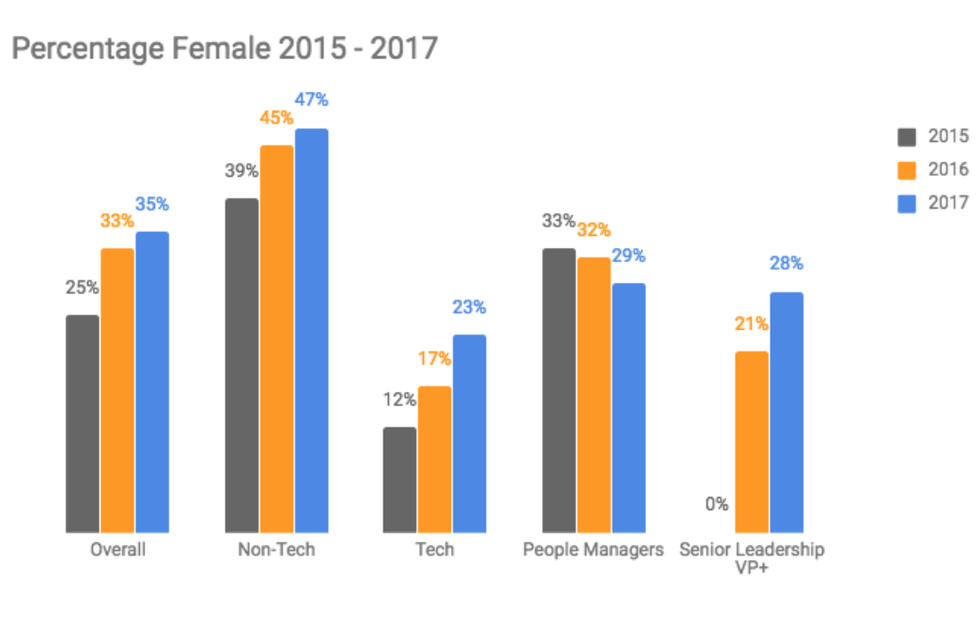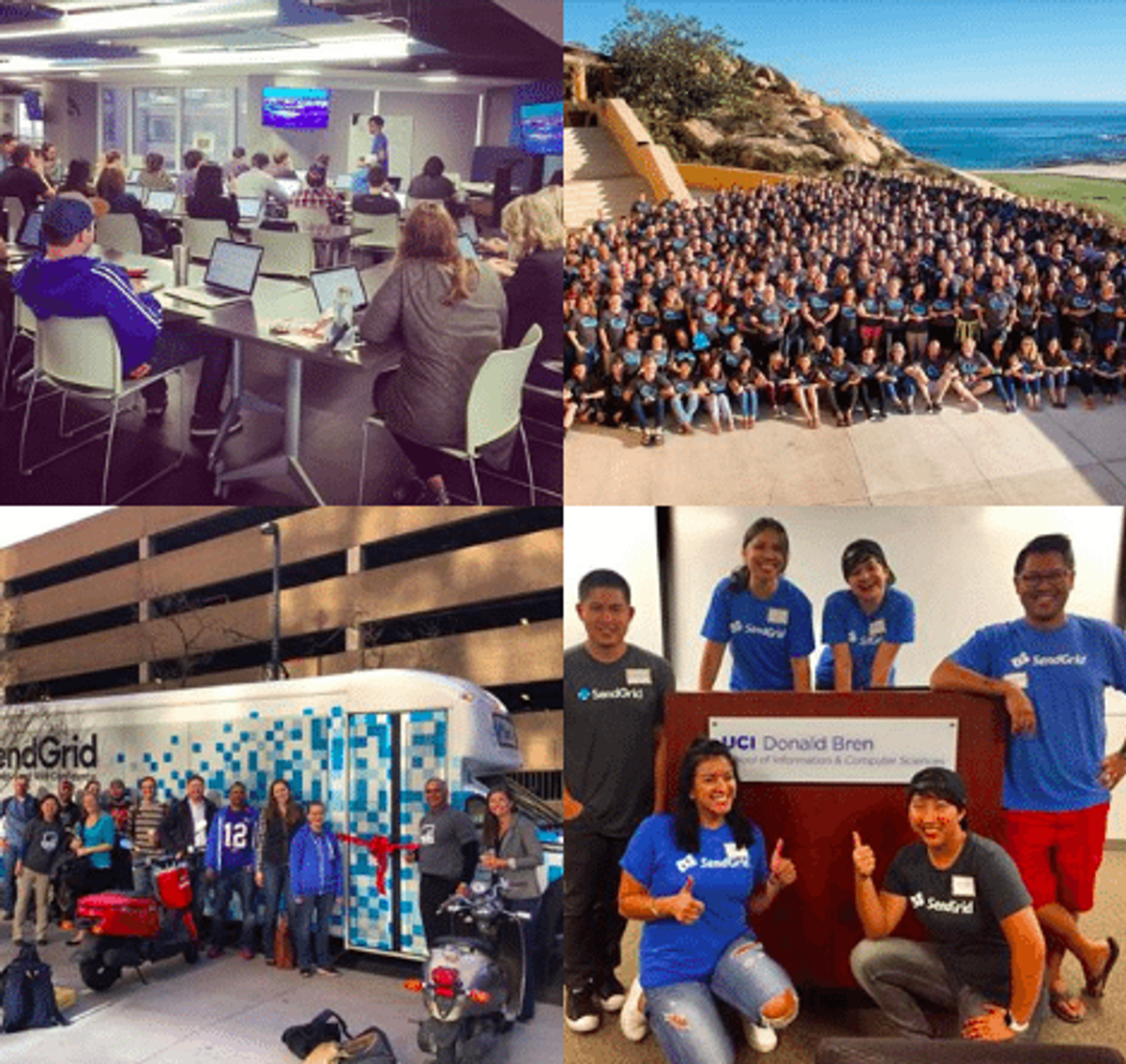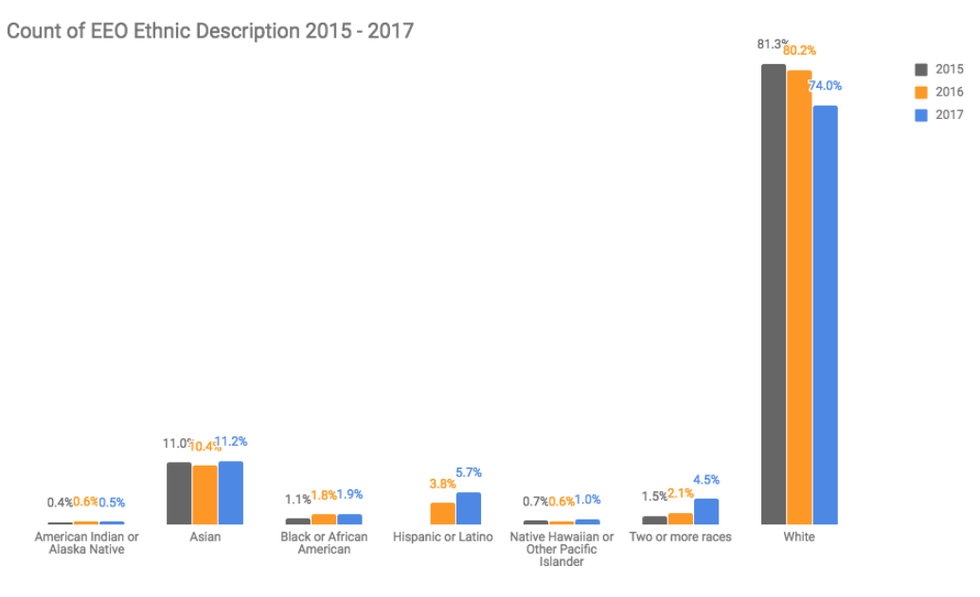Below is an article originally written by Pattie Money, the Chief People Officer at PowerToFly Partner SendGrid, and published on April 30, 2018. Go to SendGrid's page on PowerToFly to see their open positions and learn more.
At SendGrid, we have committed to making progress on improving diversity and inclusion to ensure that we're a great place to work for all. Every SendGrid employee ("Gridder") needs to be able to do their best work, but that can only happen in an environment where everyone feels valued for their authentic selves and the work they do.
We can't innovate at the velocity our customers demand if we don't have a workforce that mirrors our customer base and deeply understands each customer segment. We need diversity in every form of the word including ethnicity, religion, gender, sexual orientation, skin color, thought, parental status, mental health, geography, background, etc. Not only is caring about diversity and inclusion the right thing to do, it's a business imperative.
We've released our diversity numbers for the past four years along with many other tech companies who are shining a light on this important topic. We believe that what gets measured and reported gets attention. Therefore, we annually measure and report our progress. We're committed to sharing our journey, both our success and where we have fallen short, so that others can learn from our experiences.
A look at the numbers
In 2017, we hired over 128 new employees and the efforts to source qualified, underrepresented (non-Caucasian male) professionals were significant. We have been particularly successful in improving our female representation at The Grid.
We recognize that diversity is much bigger than gender, however, given that gender disparity impacts over 50% of our nation's population, it intersects with all other diversity factors and is a major lever in improving diversity at The Grid:
- Organizationally, our female representation improved from 25% back in 2015 to 35% in 2017.
- Women in technical roles increased from 12% in 2015 to 23% in 2017. This is one area where we've made steady improvements year-over-year. Although we're happy about our progress, we're still not satisfied with these numbers and believe all of our teams will be stronger with more female representation.
- Women in management roles fell from 33% in 2015 to 29% in 2017. This was due to our growth in our management team, without as many of our new hires being female. We'll continue to focus our recruiting sourcing for future leadership hires to ensure our pipeline includes a strong, diverse candidate slate.
- Senior leadership, defined as those in VP roles and above, improved drastically. At the end of 2015, we had 0% female representation at that level, whereas this year, our senior leadership team is made up of 28% females.
- Our Board of Directors has grown with the addition of two amazing women; Anne Raimondi and Hilary Schneider. Having women in senior roles and having female board representation sends a strong message to our female Gridders and to other women who may think about joining SendGrid.

Progress on our racial diversity figures have improved, but not at the same rate:
- Today, SendGrid is 74% white Caucasian, down from 81.3% in 2015, and 26% of Gridders are races other than white/Caucasian.
- Our Hispanic or Latino workforce, grew from 4% in 2015 to 5.7% in 2017. Those identifying as two or more races increased from 1.5% in 2015 to 4.5% to 2017.
- Our percentage of black or African American Gridders improved from 1.1% in 2015 to 1.9% of our workforce.
A culture of inclusion
This is where we start. If our current Gridders don't feel included due to their differences, we won't be effective in retaining diverse talent which means that attracting diverse talent will be even more difficult. Although this has always been a focus for us, this is the first year we've built a program around our commitment to building a more inclusive culture where everyone feels like they belong.
Expanding our definition of diversity has been critical and has led to changes in our benefit plans. One of our core values is Happy, and we know that you cannot be happy at work if your benefit plans exclude specific coverages that are needed based on your differences and the different needs of your loved ones. With that in mind, we've made the following changes to our benefits offerings:
- We began offering domestic partner benefits since families come in many forms.
- We added infertility coverage, recognizing that the pain that comes from infertility is only exacerbated by the financial strain it adds when this isn't part of your health insurance coverage.
- We added autism benefits to our medical coverage after realizing the gap in coverage and the impact to those who are working with children or who themselves fall in the spectrum who don't have the coverage they need.
Feelings of belonging and inclusion can be difficult to measure and quantify. However, through our annual inclusion survey through Culture Amp, we're gathering data and insights on the different way we experience life at The Grid. These stories give depth and meaning to how it can feel to be "different" from the majority and has led us to take specific actions.
Thanks to feedback from our Gridders, we've identified three key themes from the survey which we are committed to improving for the year:
- Creating a safe place for diverse thoughts and ensuring candid conversations are happening throughout the organization. Formalized training is planned to create awareness and provide us with the skills needed to have honest, candid conversations—even on difficult topics. Helping people be able to share their stories and be their authentic selves comes from being able to communicate effectively with each other–and we're committed to improving in this area.
- Improving the experience of underrepresented professionals at SendGrid. We held our first Diversity Week to bring awareness to the importance of diversity and inclusion to our organizational success. There were opportunities for learning about each other in a new and different way and we'll continue this journey with future events to educate, inform, and grow together. We've kicked off our first Employee Resource Groups to build community and connection among our underrepresented professionals at The Grid.
- Connections are critical for inclusion. We're building connections in many ways including the development of special interest groups. These create opportunities to develop real friendships and give all Gridders an opportunity to find a group that feels fun and inclusive. We also have monthly Fireside Chats that spotlight different Gridders and their life stories. We believe that the first step towards inclusion is understanding someone's story which provides the human element that is part of each of our life experiences.
Recruiting and development
We've invested in improving our recruitment and development practice to increase our underrepresented population and also to ensure our internal practices are fair.
Our recruiting team dedicated over 300 hours to sourcing underrepresented professionals around the country, improving the diversity of our candidate slates. We also continuously work to ensure that our job descriptions are inclusive and welcoming to all candidates. To ensure our hiring and selection criteria leads to hiring the very best candidate for the job, we've redesigned our talent acquisition training with a focus on unconscious bias. Only by recognizing and bringing awareness to our unintentional biases can we have an impact on our goal of being a diverse and inclusive workforce.
We're also invested in ensuring fair and transparent practices internally through our partnership with Pipeline Equity. The platform, which is still in beta, measures gender equity on a number of dimensions including promotion rates, resource allocation and provides insights into how we can address in real time. We are committed to actioning where gaps are identified.
In addition to this partnership, we will continue to partner with National Center for Women In Technology (NCWIT) as a member of the Pacesetters group and Entrepreneurial Alliance.
Onward
We've made progress and we continue to look in the mirror and ask ourselves what we can do better. Creating a workplace that employs diverse talent is only part of the equation and so we're excited to share what we are doing to build a culture where everyone feels like they belong and can be their authentic selves at work.
We realize that creating a truly diverse and inclusive workplace is a journey and requires commitment from each of us if we are to continue to make progress in a meaningful way. It's a journey that requires the inclusion of all–from those in underrepresented groups to those in the majority because it's together that we actually create a 4H4ALL (Happy, Humble, Hungry and Honest) culture.
It also takes a commitment from our industry to work together, to share ideas, and to learn from each other. The tech industry needs to change significantly if we are going to be an industry that ensures that anyone can achieve their full potential.
We're committed to sharing with our industry partners, to being transparent in our lessons learned, and to being part of the solution so desperately needed in our industry and in our world. Technology has changed our world in so many ways and now it's our time be the driver for change to ensure that our workforces are places where all individuals can truly grow and thrive.





